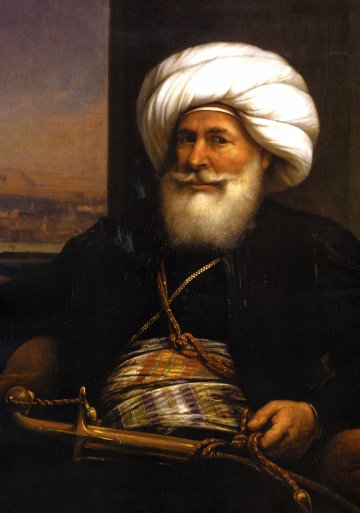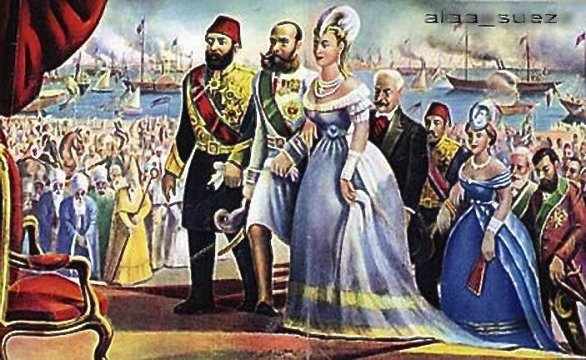|
John Tyman's Cultures in Context Series EGYPT and the SAHARA www.johntyman.com/sahara |
|
2.5 The Arab Empire : 114-117 |
| . |
|
John Tyman's Cultures in Context Series EGYPT and the SAHARA www.johntyman.com/sahara |
|
2.5 The Arab Empire : 114-117 |
| . |
 |
| .116. At the beginning of the 19th century, Egypt experienced a revival under Mehemet Ali, a Turkish officer who was proclaimed Pasha of Egypt after he'd forced the withdrawal of the British forces that had just defeated the French sent there by Napoleon to cut Britain's lines of communication with India. He built dams and irrigation canals, reorganized land holdings, and exported food to Europe. He built a powerful army, occupied both Mecca and Medina, annexed Syria and the Sudan, attacked Istanbul and almost destroyed the Ottoman Empire. (Portrait of Mehemet Ali in 1840 courtesy Wikipedia.org ) |
 |
| .117. His successor Ismail inaugurated the Suez Canal in 1869, and a host of expensive public works thereafter. On the verge of bankruptcy he was forced to sell his shares to Britain (at a very low price!): and from 1876 onwards his finances were audited by Britain and France. When officers in the army of his successor revolted, chanting “Egypt for the Egyptians”, they were quickly defeated by the British, who built new dams and canals to extend the area of arable land and turn Egypt into vast cotton field for the mills of Manchester. (Opening of Suez Canal by Empress Eugenie in 1869 courtesy Devener.com ) |

![]()
Text and photos by John Tyman
unless otherwise indicated.
Intended for Educational Use
Only.
Contact Dr. John Tyman at johntyman2@gmail.com
for more information regarding
licensing.
![]()
www.hillmanweb.com
Photo processing, Web page layout,
formatting and hosting by
William
Hillman ~ Brandon, Manitoba ~ Canada